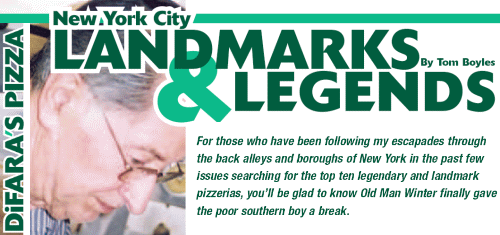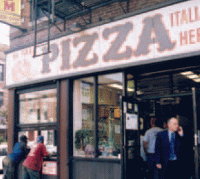 After five or so bone-chilling trips into the Big Apple, I finally had the opportunity to walk through Central Park and eat a hotdog without suffering from hypothermia. Here’s a little tip I’ll share from my most recent experience; if you want a hotdog in New York, go to Nathan’s in Coney Island and leave the street-side hotdog carts alone.
After five or so bone-chilling trips into the Big Apple, I finally had the opportunity to walk through Central Park and eat a hotdog without suffering from hypothermia. Here’s a little tip I’ll share from my most recent experience; if you want a hotdog in New York, go to Nathan’s in Coney Island and leave the street-side hotdog carts alone.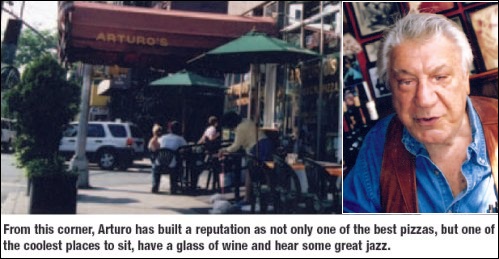
Now I am a pretty lucky guy. Just think about the job I have…I travel the world and eat pizza, but for every yin there’s a yang. On this trip my yang got stuck in Queens for four days because every hotel in Manhattan was booked for the first leg of my trip. It wasn’t so bad though. I learned how to efficiently use the subway (which our publisher Steve Green will be happy to hear because cab fares didn’t eat my expense budget alive.) I was also fortunate enough to score a creampuff of a ticket to see the Mets play at Shea Stadium, which was conveniently located right across the street. My seat was close enough to the field to hear Mike Piazza talking to the runners who were lucky enough to make it to first base. I want to say thanks to whoever that scalper was who sold me a $15 ticket that close to the field. He must have heard my southern drawl and had pity on me since it was my first MLB game.
It wasn’t all playtime while I was there. This round, Gemma Schiano of Grande Cheese chauffeured me around to my last four stops of my search for the Top Ten Landmark and Legendary Pizzerias of New York. I also want to thank Chef Bruno, corporate chef for Marsal & Sons, for taking me to a couple of his personal favorite pizzerias. My last four stops were DiFara’s Pizzeria and L&B Spumoni Gardens, both in Brooklyn, and Auturo’s in the Village and the original Patsy’s in Harlem.
You’re in His World Now.
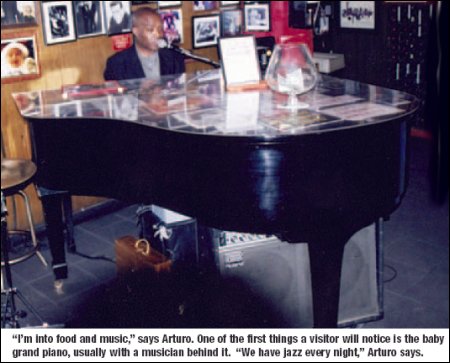 At my first stop, Gemma and I spent about 30 minutes looking for a parking spot. I hear this is a time-honored tradition for the natives. We score a spot and walk up the street to this little corner pizzeria. There’s an old man outside unlocking the gates over the storefront. Gemma introduces me, and we walk inside. The inside is about as basic as any place could be. There are about three or four plain, wooden tables and chairs and a counter with a small table and oven behind it in the front corner. Behind the counter in the front corner is a window that opens up to the sidewalk. A couple of herbs are growing in the window. The owner is Domenico DiMarco (Domenic to everyone who knows him) and the pizzeria is DiFara’s Pizza.
At my first stop, Gemma and I spent about 30 minutes looking for a parking spot. I hear this is a time-honored tradition for the natives. We score a spot and walk up the street to this little corner pizzeria. There’s an old man outside unlocking the gates over the storefront. Gemma introduces me, and we walk inside. The inside is about as basic as any place could be. There are about three or four plain, wooden tables and chairs and a counter with a small table and oven behind it in the front corner. Behind the counter in the front corner is a window that opens up to the sidewalk. A couple of herbs are growing in the window. The owner is Domenico DiMarco (Domenic to everyone who knows him) and the pizzeria is DiFara’s Pizza.
As Domenic shuffles behind the counter to open the window, I begin to ask him about his history. He comes over to the counter and leans against it and starts to tell me his story with a voice that combines a Brooklyn accent mixed with the remnants of Italian. The first thing he points out is an old black and white picture of a young man standing in front of a pizza oven. “A few years ago a guy came in here and told me this was the pizzeria he used to go to as a kid,” Domenic says. “He said he lived in Florida now, but wanted to stop by to see if the pizza was the same as he remembered it. He was amazed that I was still here making pizza. He pulled out this old picture he took of me so many years ago and gave it to me.” As I look at the young face in the photo and glance back at Domenic, I notice that he is standing in almost the same spot he was when the photo was snapped so many years ago. There was the same oven, the same prep area and the same young-old man right here in front of me.
History and Background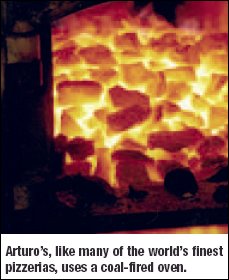
Domenic came to the U.S. in 1959 at the age of 23. Back in Italy, he was a farmer, but moved to the U.S. with his brother because he said Italy was no good after the war. When Domenic arrived in the U.S., he immediately went to work as a dishwasher and then pizza maker at a place called Queen Pizza. He opened his own pizzeria with a partner in 1964. Word soon spread about their pizza and a news reporter came out to do a story on them. In the article, the reporter combined their lasts names (DiMarco and DiFarina) and called them DiFara’s and that is how they got their current name. In 1976, Domenic bought out the partner and kept the name of the pizzeria.
Domenic at Work
The pizza at DiFara’s is wonderful. People are usually stacked up at the counter at least two people deep, but in my opinion that is not why you should visit. The reason why you should visit is to see what old school pizza making is like. Domenic is the only person you see out front. He is a one-man operation and everyone who comes in is on his time schedule. I stand back and watch him as he takes a single dough ball, which he makes every day at 9 a.m. He slices off hunks of fresh mozzarella directly from the loaf and makes each pizza one at a time. Meanwhile, customers are continually stacking up behind the counter and at the window outside. The phone rings and Domenic stops making the pizza to walk over and spend five minutes telling an out-of-towner how to get to the pizzeria. He hangs up and walks back over to the counter and spends a few minutes talking with people while everyone is waiting anxiously for a slice. After a few minutes, he walks over to the oven and reaches in with his bare hands to slice the pizza out and checks to see how it is. Did I mention that he reaches into the oven with his bare hands? If it is ready, he shuffles over to the counter, slices it and starts to hand out slices to eager customers. Once the finished pizza is dished out—and it only takes about five minutes—he walks back over and finishes making the single pizza he left when the phone rang 10 minutes earlier.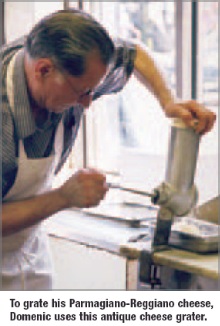
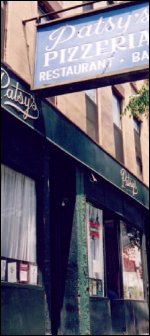 “Nobody pushes Domenic to get in a hurry,” one customer outside the window tells me. “I used to say, ‘Domenic…come on’ and try to hurry him, but I discovered years ago that once you step in here, you are on his time.”
“Nobody pushes Domenic to get in a hurry,” one customer outside the window tells me. “I used to say, ‘Domenic…come on’ and try to hurry him, but I discovered years ago that once you step in here, you are on his time.”
I asked Domenic why with all of the demand doesn’t he hire some help. “I would rather spend my money on top quality ingredients and not have any overhead,” he tells me. “I have two sons and one daughter who help me, but I make the pizza. I work here seven days a week, but I am thinking about starting to close on Mondays. When will I retire? I never really thought of that. If I do, it’s up to my sons and daughter whether they keep the place. I don’t do this because of the money, I do it because I like it. Back in the day, this was a heavily Jewish populated area. Most everything was closed on Saturdays, but I was open…the only restaurant open here. That’s when everyone started coming.”
The Pizza
“I taught myself to make pizza,” Domenic says. “I did bring a few things back from Italy though. I use Mozzarella di Bufala Campana, which is real buffalo milk cheese. I also use fresh mozzarella and fresh Parmigiano-Reggiano. For the dough, I import “00” flour, which you can only get in Italy, and use San Marzano tomatoes in my sauce and some fresh herbs that grow in my window. When you see the little burns spots on the bottom of the crust…that’s Italian.”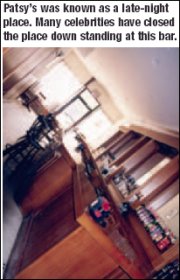
People are in such a hurry these days. Restaurant owners struggle to sell more volume and more and more the old ways are being forgotten. The entire time I was at DiFara’s I never saw anyone rolling their fingers on the counter or tapping their foot trying to be in a hurry. They all talked to each other and enjoyed the scene of one old man making pizza. His pizzeria forces people to talk to each other and no one rushes him. You come to love the wait and watch a way of business that has long been forgotten in the hustle and bustle of everyday life. You walk in DiFara’s and you walk into a time warp…you are in Domenic’s world and on his time…you eat when he is ready for you to eat.
Still in the Family
My second stop with Gemma Schiano was also in Brooklyn. It was a place called L&B Spumoni Gardens. L&B got its start back in 1939 when Ludovico Barbati (that’s where the L&B came from) came to the U.S. with an idea for selling spumoni. Spumoni is an Italian dessert that falls somewhere between ice cream and milk sherbet. He started out with a small horse-drawn carriage from which he sold the cool, creamy treat. He had three sons, two of whom went into military service. As each one returned from service, a section was added to the business and they went to work with their father.
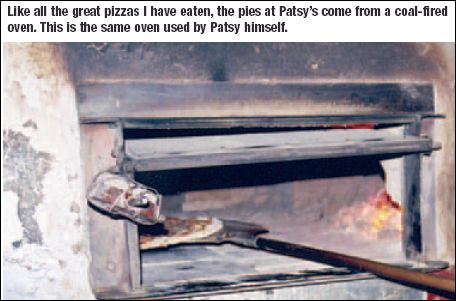 The original house that everyone grew up in was located directly behind the restaurant. As Louie Barbati gives me a tour of the area where they make the spumoni, he calls me over to a door. I look out of the back door and see the door to the house just 15 feet away. “We all grew up here,” he says. “Everyone would walk out of the house right into work. My grandfather built a business around his life, or vice-versa. We used to store all of our ingredients in his garage. It started out as just a spumoni business, but when my uncle came out of the service they added the pizzeria and then the restaurant.”
The original house that everyone grew up in was located directly behind the restaurant. As Louie Barbati gives me a tour of the area where they make the spumoni, he calls me over to a door. I look out of the back door and see the door to the house just 15 feet away. “We all grew up here,” he says. “Everyone would walk out of the house right into work. My grandfather built a business around his life, or vice-versa. We used to store all of our ingredients in his garage. It started out as just a spumoni business, but when my uncle came out of the service they added the pizzeria and then the restaurant.”
The Pizza
“Our grandfather taught pizza to his sons, and they taught it to his grandsons. Now there are about 10 family members in the business,” Louie says. “Why pizza? That is a good question. When the first son came back from military service he had nothing to do, so pizza was the perfect addition to spumoni. No one in our family had ever done pizza before. Well, we had one uncle who worked in a bakery and ended up opening his own pizzeria, but that is a different place. Our pizza is light and airy…not a lot of cheese. Nobody in New York really specializes in Sicilian like we do. Those who do all want to add chicken and vodka sauces ya’ know…all kinds of toppings. Ours is different.My uncle just did it his way. We make the thin pie too, but about 75 percent of what we sell is the Sicilian style. Others try to make spumoni and pizza and call it L&B style, but they can’t make it like ours.”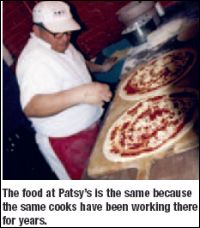
At first glance their pizza looks thick and heavy, but once you pick it up you find that the looks are deceiving. Instead, it is very light. They dress the pizza with sauce, cheese and oil and place them on a rack beside the oven. The pizzas warm up, giving them a twice-raised dough characteristic and are then cooked.
What Makes L&B Special
Louie says that what makes L&B special is the location. “Back years ago, in the late 1950s, all of the cars would park across the street and people would come over and order food and eat outside,” he says. “It was great. After a while, there got to be a lot of bikers who would come out here. There would be all of these motorcycles parked everywhere. We weren’t a biker joint with a rough crowd. It was just a lot of people who had motorcycles and a great place to hang out. Others would come out to look at all of the bikes. We don’t have, and never will have, a liquor license. We just don’t want that kind of clientele.”
Spumoni
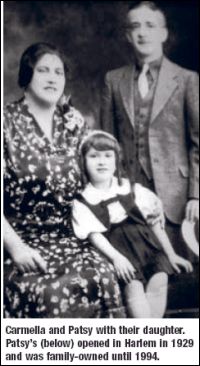
In the early days, Ludovico sold his spumoni from a horse-drawn carriage. “Our grandfather would make the spumoni in these old-fashioned, belt-driven spumoni makers,” Louie says as he shows me one of the original machines that is still in use. “He would load up the carriage and ride around selling it.”
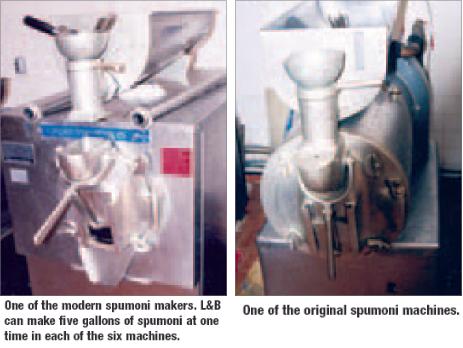
The spumoni L&B sells is best described as a milk sherbet. Louie says his father Americanized it and used chopped almonds instead of fresh fruit. “All that is in spumoni is milk, sugar, and flavoring,” Louie says. “With the six machines we have, we can make five gallons each in 15 minutes. We usually make three different flavors at once, two machines for each flavor. Usually we make vanilla, pistachio, and chocolate.”
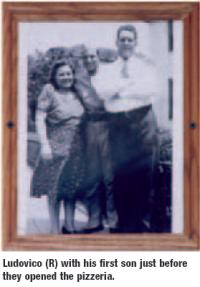
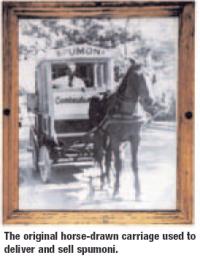
Inside L&B you can find old pictures of the original building, which is still in use—just with a slight facelift. All of the recipes, from the pizza to their spumoni are the exact recipes created by the grandfather and his sons when they first opened. From one generation to the next, L&B Spumoni Gardens has remained a family tradition. According to several family members I spoke with, there are several great-grandchildren poised to take over in the years to come. “We’re going to keep doing what we’re doing and keep it in the family,” Louie says. I hope they do, because finding a truly great Sicilian pizza in New York is hard to do.
Next Issue
In the next issue, I am going to round out my tour of the top ten legendary New York pizzerias. You’ll read about the original Patsy’s in Harlem and the famous Auturo’s Pizza in Greenwich Village. All of these pizzerias will be represented at the New York Pizza Show. You’ll get a chance to talk with the owners, ask them about their history and hear what the pizza business is like, or was like, in New York. Also, PMQ will be providing maps marking all of these locations so while you are in New York for the show you can drop in and see what all the talk is about. Until then…



